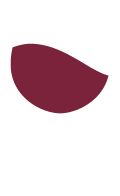
#1 Wine of 2017

- 100 pts James Suckling100 pts JS
- Curated by unrivaled experts
- Choose your delivery date
- Temperature controlled shipping options
- Get credited back if a wine fails to impress
2015 Vina Almaviva Blend Puente Alto 750 ml
- Curated by unrivaled experts
- Choose your delivery date
- Temperature controlled shipping options
- Get credited back if a wine fails to impress
The #1 Wine of 2017: First-Growth Technique Meets Chilean Terroir
The #1 Wine of 2017: First-Growth Technique Meets Chilean Terroir
After tasting 17,000 wines, James Suckling made this profound 2015 Almaviva Puente Alto his #1 pick for the Top 100 Wines of 2017. Pouring on a perfect 100-point score, Suckling praised the Chilean thoroughbred as an exemplar of “neoclassicism with energy and finesse” featuring a “glorious and complex nose.” Founded by Château Mouton Rothschild’s Baron Philippe de Rothschild, Almaviva is one of South America’s preeminent wineries. Winemaker Michel Friou, formerly of Château Margaux, brings classical French technique to sumptuous, rich fruit grown on the highest terraces of the Maipo Valley. The results have been nothing short of astonishing, and in 2015 yielded one of the most powerful Bordeaux blends ever released from Chile. At $145, this is quite possibly the best-priced 100-point wine in the world.
In 1997, Baron Philippe de Rothschild—the face of Pauillac First Growth Château Mouton Rothschild—teamed up with Chile’s Concha y Toro to realize a grand ambition. The Frenchman wanted to produce a Grand Cru Classé wine in South America, and his unerring nose for terroir had led him here, to the chilly, elevated terraces of the Maipo Valley.
Rothschild had already pulled off a visionary viticultural feat in the New World over a decade earlier. In 1982 he teamed up with Robert Mondavi to create Opus One in Oakville, California, which would go on to become the most famous winery in the Napa Valley. For Almaviva, the Baron assembled a brilliant team headed by Patrick Léon (Mouton Rothschild, Opus One) and Enrique Tirado to tend to 98 acres of vines. The venture wowed critics from the get-go, with Robert Parker declaring of the debut vintage: “Soft, rich, and multidimensional.”
Today, another veteran of Bordeaux’s First Growths—Michel Friou, formerly of Château Margaux—has taken up the winemaking torch, presiding over vines up to 38 years in age. Located at the Maipo Valley’s highest point, Puente Alto offers ideal conditions for the cultivation of Bordeaux varieties. The poor, rocky, alluvial soils lend the wines both mineral sophistication and, thanks to low pH levels, richness and elegance. Cold winds swooping down off the snow-frosted Andes cool the vineyards, making for a much longer growing season than in neighboring regions and allowing grapes to ripen slowly to perfection.
2015 was a classic vintage for Chile, warm and dry, benefiting from uniform fruit set and flowering, and even ripening. High summer temperatures drove up concentration while cool nights locked in acidity. After harvest, Friou found himself with the makings of a wine—both elegant and refined—that seemed to walk the tightrope between Stags Leap and Bordeaux’s Right Bank.
For James Suckling, 2017 was the Year of Chile, declaring in his vintage report: “There’s never been a better time to buy Chilean wine.” He punctuated his point by electing this 2015 release from Almaviva to be his #1 wine of the year, awarding it a perfect 100-point score and a paragraph-long tasting note. The nose was “glorious and complex,” the body “so balanced and harmonious.”
This wine truly sets a new benchmark for power and elegance in the region. Napa and Bordeaux aficionados can’t afford to miss out.
You might also like these wines
- Member Favorite
- Member Favorite
- You're on page











